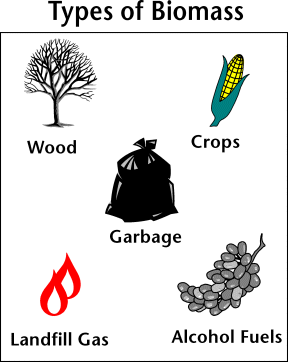ecology unit 1
0.0(0)
0.0(0)
Card Sorting
1/61
Study Analytics
Name | Mastery | Learn | Test | Matching | Spaced |
|---|
No study sessions yet.
62 Terms
1
New cards
What is ecology?
the study of relationships between organisms
2
New cards
What do ecologists do?
Ecologists study the relationship between plants, animals and the environment
3
New cards
What things do ecologists study?
Population ecology, community ecology, ecosystem ecology, behavioral ecology
4
New cards
Example of an interaction that took place during the seed investigation
Seeds with apple juice grew mold that fed off of the juice
5
New cards
Hierarchy of Ecological Organization

6
New cards
Biodiversity
The number, and variety of living organisms in a given area, during a specific period of time; total genetic based variety of organisms
7
New cards
Trophic Levels of Consumers
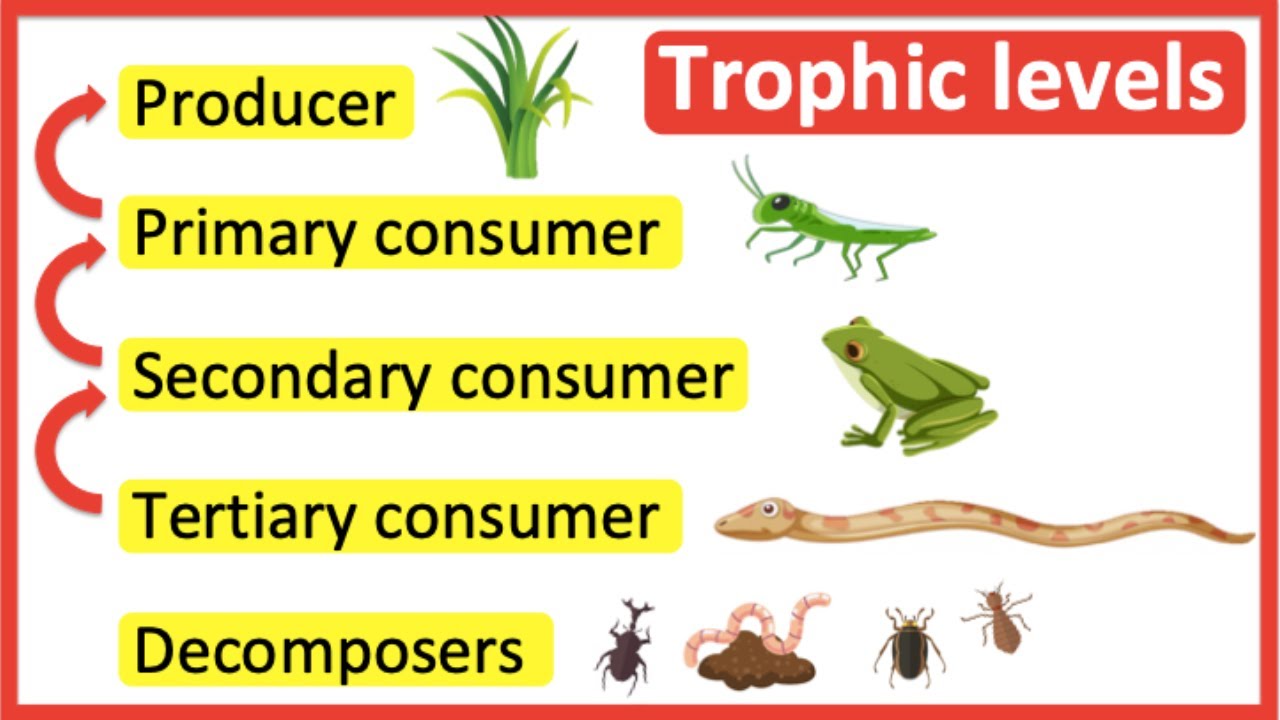
8
New cards
Species Richness
the number of species in an area (ex. 3 types of grass in a field)
9
New cards
Species Abundance
the number of individuals per species (ex. 1 million oak trees)
10
New cards
Genetic Diversity
the range of different inherited traits within a species (ex. different dog breeds)
11
New cards
Habitat Diversity
the range of habitats present in a region (ex. desert, grasslands, oceans)
12
New cards
Taxonomy
how organisms are classified
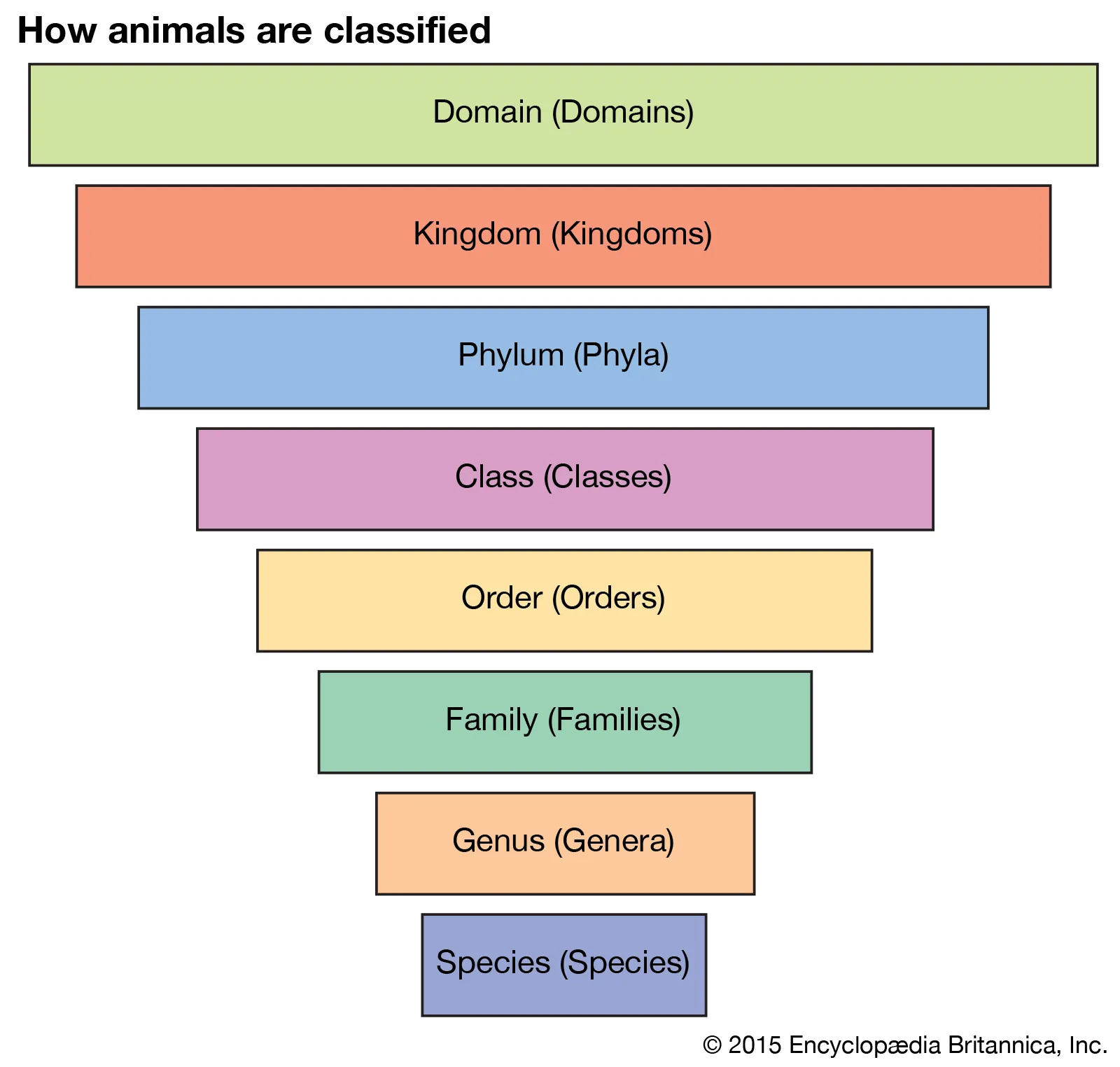
13
New cards
Eubacteria
single-celled, no organelles (ex. E. coli, salmonella)
14
New cards
Eukaryota
1+ cells, have organelles (ex. fish, trees, dolphin)
15
New cards
Archea bacteria
single-celled, unique biochemistry, extremophiles (ex. cyanobacteria)
16
New cards
Viruses
NOT ALIVE - protein, not a domain (ex. COVID, flu)
17
New cards
Binomial Nomenclature
2-system identifying name used worldwide, "Genus species" (italicized)
18
New cards
Phylogenetic Tree
diagram that depicts the lines of evolutionary descent of different species, organisms, or genes from a common ancestor
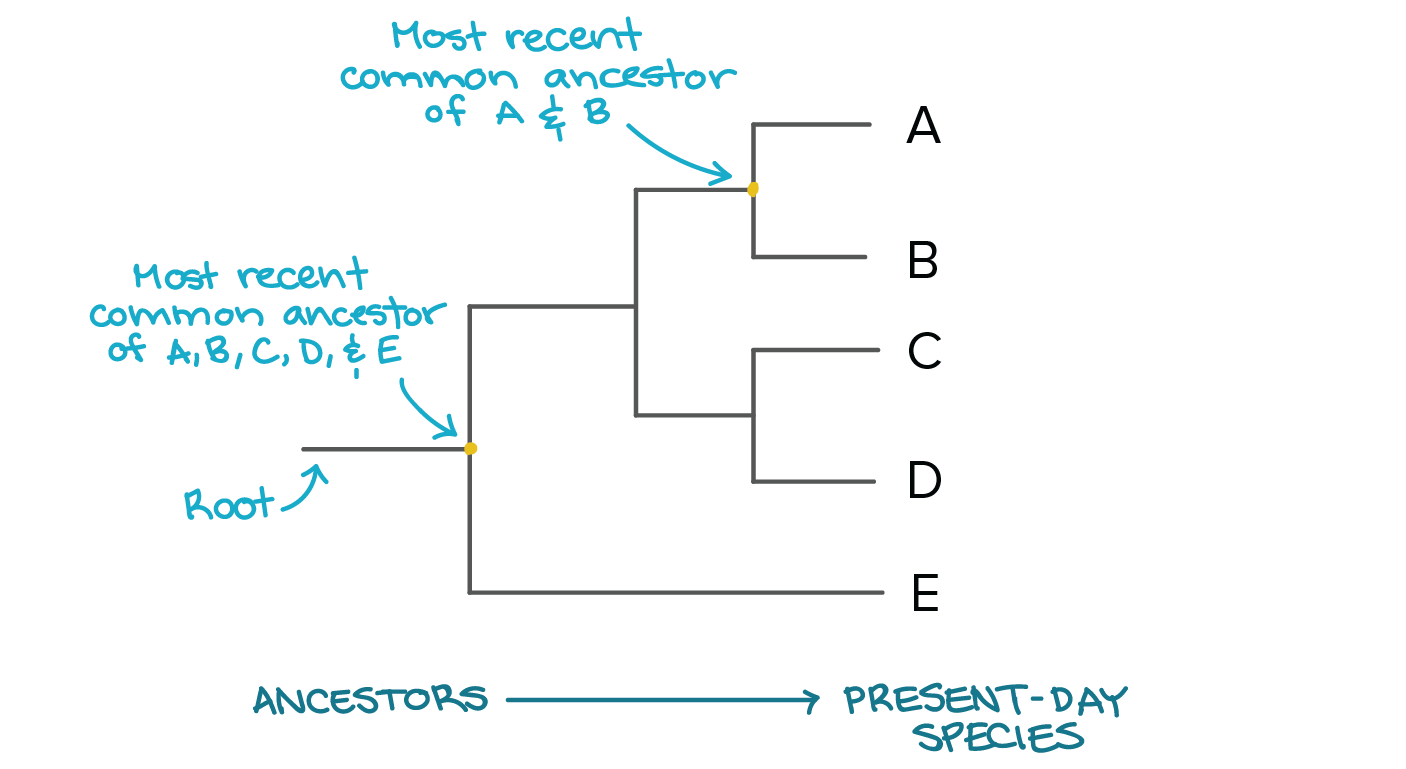
19
New cards
Fungi
organisms that use glucose (ex. yeast, molds, mushrooms, and toadstools; separate from green plants)
20
New cards
Plants
organisms that create glucose through photosynthesis (ex. grass, trees)
21
New cards
Animals
organisms that use glucose (ex. humans, bears, tigers)
22
New cards
Protists
organisms that both make and use glucose; single-celled (ex. sea lettuce, kelp)
23
New cards
Species
A group of organisms that are closely related, who can mate to produce fertile offspring. All of the cats are feline, but each cat is a different species. "Genus species" name

24
New cards
Population
A group of individuals that belong to the same species and live in the same area.
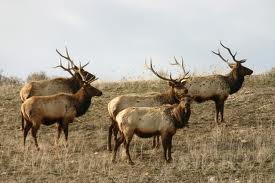
25
New cards
Species life history
the pattern of survival and reproduction events typical for a member of the species (aka life cycle)
26
New cards
Habitat
Place where an organism lives
27
New cards
Niche
An organism's particular role in an ecosystem, or how it makes its living
28
New cards
Intrinsic rate of growth "r"
maximum rate of annual growth under ideal physical conditions
29
New cards
Population limiting factors
The reason why organisms don't reach "r" :
biotic (predation, parasites/disease, competition)
abiotic (weather, viruses)
biotic (predation, parasites/disease, competition)
abiotic (weather, viruses)
30
New cards
Intraspecific competition
within the same species (ex. 2 wolves fighting over a dead fox)
31
New cards
Interspecific competition
between different species (ex. an alligator and a lion fighting over a buffalo)
32
New cards
Exponential Growth
J-curve, rate of growth is constantly increasing over time
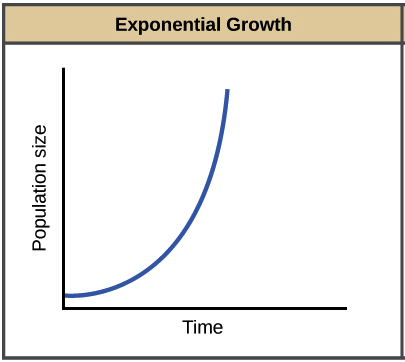
33
New cards
Logistic Growth
S-curve, rate of growth grows then shrinks because of carrying capacity
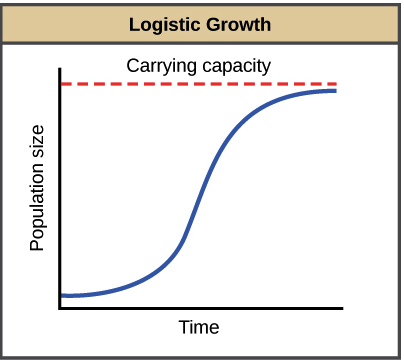
34
New cards
Carrying Capacity "k"
maximum number of individuals an environment can support over a period of time; limits a population (over k = die off)
35
New cards
Community
A group of interdependent organisms inhabiting the same region and interacting with each other.
36
New cards
Symbiosis
A close relationship between two species that benefits at least one of the species
37
New cards
Mutualism
A relationship between two species in which both species benefit (ex. birds cleaning hippo's teeth)
38
New cards
Parasitism
A relationship between two organisms of different species where one benefits and the other is harmed (ex. tick on a dog)
39
New cards
Commensalism
A relationship between two organisms in which one organism benefits and the other is unaffected (ex. burrs) - rarest!
40
New cards
Resource Partitioning
the division of resources to avoid interspecific competition for limited resources in an ecosystem; each organism occupies a different niche
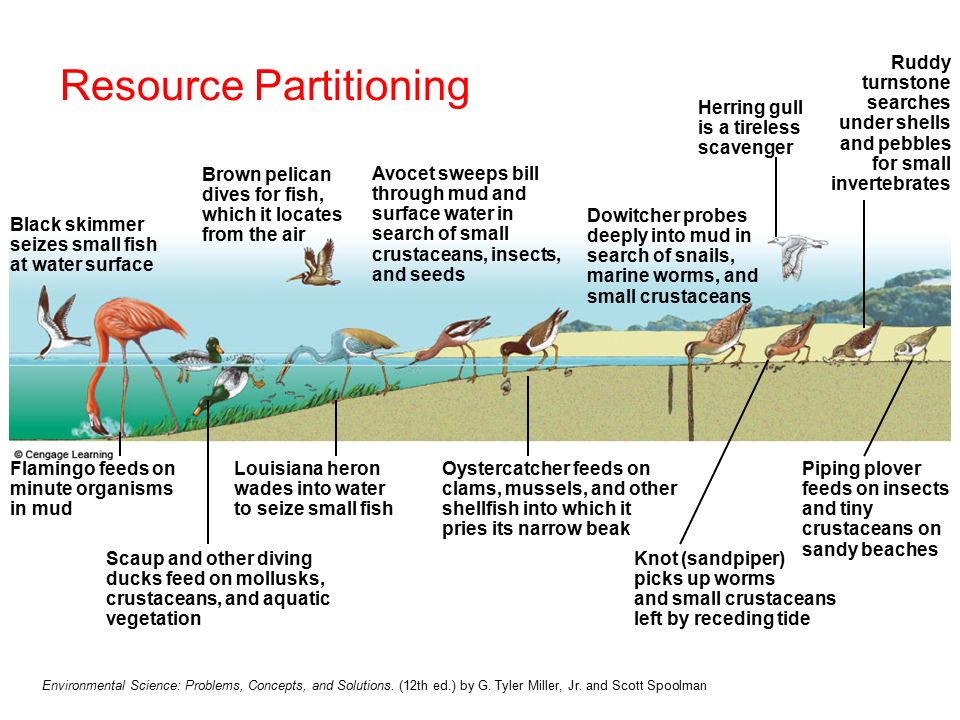
41
New cards
Population Cycles
populations rise and fall over a predictable period of time
- predator population is usually less than prey population
- lag time due to reproduction delay
- predator population is usually less than prey population
- lag time due to reproduction delay
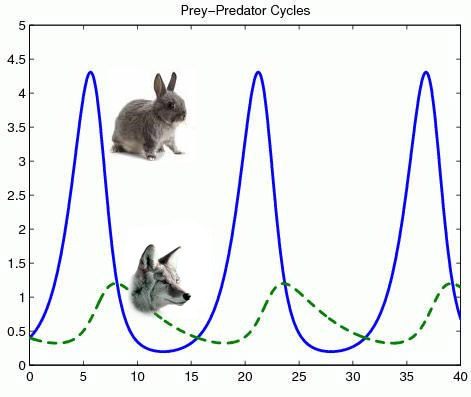
42
New cards
Why are nutrients recycled in an ecosystem?
Decomposers break down dead organisms into nutrients and gases so that they can be used by other organisms
43
New cards
Carbon Cycle
most of carbon is stored in the atmosphere (CO2), plants absorb it and turn carbon into glucose
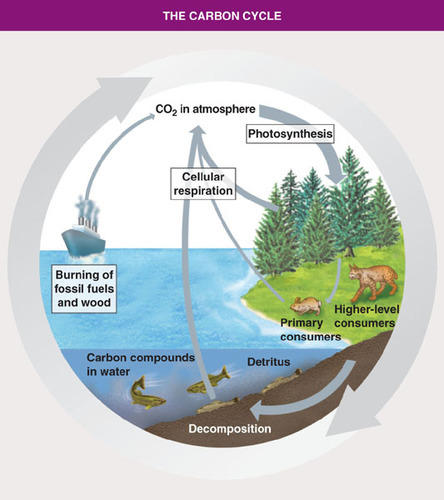
44
New cards
Why is carbon important?
Carbon has 4 valence electrons, so it’s good at bonding to make other molecules. In other words, Carbon is the building blocks for many different chemicals.
45
New cards
Phosphorus
Phosphorous is used to make genetic material, and help make ATP, which allows organisms to store and release energy.
46
New cards
Sulfur
Sulfur gives proteins structure, and the proteins make us the way we are.
47
New cards
Nitrogen
Nitrogen is required to make amino acids, proteins, and genetic material, which are essential to life.
48
New cards
Tundra biome
low temperatures, little precipitation
49
New cards
Desert biome
little rainfall, extremely cold or hot
50
New cards
Forest biome
dominated by trees; temperate forests, tropical forests, and boreal forests
51
New cards
Grasslands biome
dominated by grass; warm, dry climate
52
New cards
Aquatic biome
freshwater and marine biomes
53
New cards
1st Law of Energy (Conservation)
regarding quantity/amount of energy
energy is neither created nor destroyed
energy is neither created nor destroyed
54
New cards
2nd Law of Energy
regarding quality/type of energy
energy changes form over time and eventually becomes unusable
energy changes form over time and eventually becomes unusable
55
New cards
Entropy
the measure of the quality of the energy in the universe
any exchange of energy=waste heat and increase in entropy
any exchange of energy=waste heat and increase in entropy
56
New cards
Energy Flow in an Ecosystem
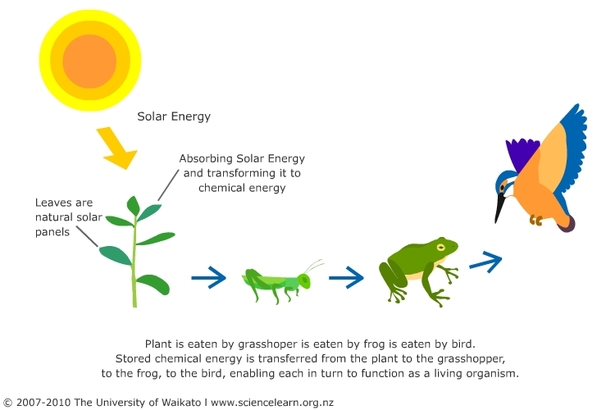
57
New cards
Energy Pyramid
A diagram that shows the amount of energy that moves from one trophic level to another in an ecosystem.

58
New cards
Plant Chemical Reactions
- plants capture solar E
- transform solar energy -> chemical energy (glucose)
- transform solar energy -> chemical energy (glucose)
59
New cards
Animal Chemical Reactions
- transform glucose -> ATP
- transform ATP -> kinetic energy (ability to move around and function)
- transform ATP -> kinetic energy (ability to move around and function)
60
New cards
Food Chain
hierarchical series of organisms each dependent on the next as a source of food.

61
New cards
Food Web
combination of all of the food chains in an ecosystem
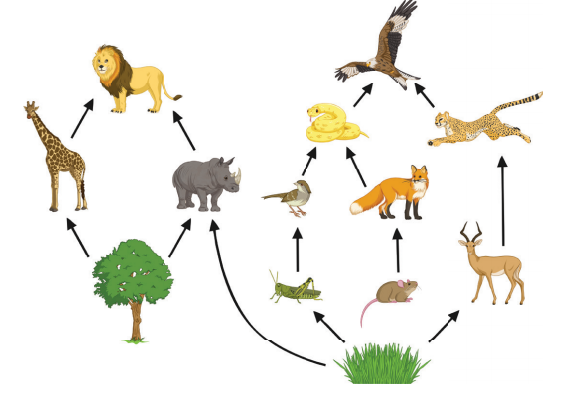
62
New cards
Biomass
Total amount of living tissue within a given trophic level
